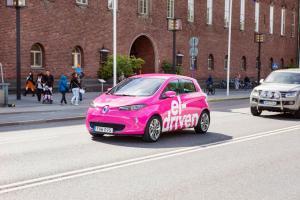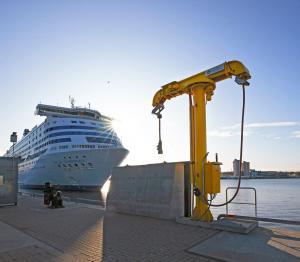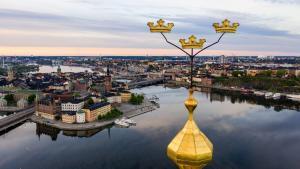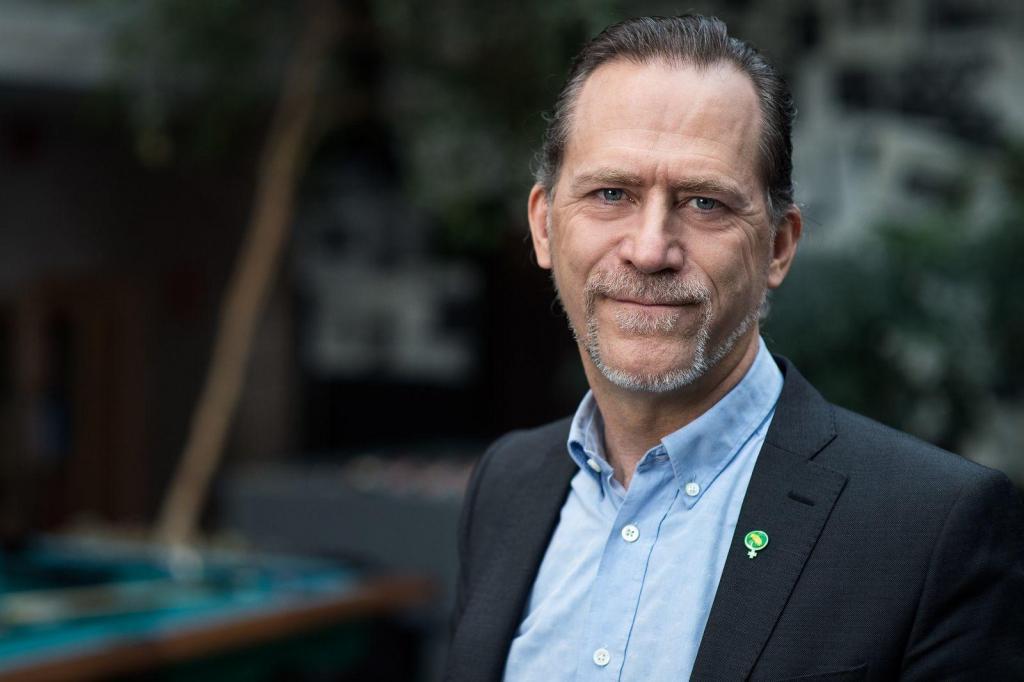Positive Feedback: A Fossil-Fuel Free Stockholm
The City of Stockholm aims to become fossil fuel-free and climate positive by 2040. The currently proposed Climate Action Plan 2020-2023 aims at taking the city to a maximum of 1.5 tonnes of CO2/inhabitant by 2023. “To reach the objectives of the Paris Agreement, ambitious goals and measures such as these are necessary” says Daniel Helldén, vice mayor for transport in this interview with Agata Uhlhorn
Climate positive by 2040 – what does that entail and what challenges do you see?
The City of Stockholm has a climate goal: to reach the objective of the Paris Agreement. By 2040, fossil fuels need to be completely phased out. Since 1990 climate emissions have decreased by 60%, however, figures from 2014 show that the transport sector accorded for 44% of the total climate emissions: an increase of 2000 ton CO2 since 2012. This is perhaps the biggest challenge for a fossil fuel-free Stockholm.
Stockholm has to have a clear long-term climate vision, to point out the direction and make it easy for citizens, companies and other key stakeholders to take bold climate action. Transformative measures need to be taken to manage the transition to a sustainable and accessible city; renewable alternative fuels are needed; energy consumption has to decrease and transport has to become smarter. It is crucial that sustainable electricity, charging hybrids and electric cars are phased in at pace that will enable a fossil fuel-free vehicle fleet by 2040. On-shore power supply (OPS) plays an important part to reduce emissions from harbour and coastal areas. In any other year, this would be a challenge, but it might prove to be especially difficult in 2020 when we face the COVID-19 pandemic.
You emphasise the transformation of the vehicle fleet and alternative fuels – what measures has the city adopted within this field?

"We need to increase the share of renewable fuels and electrify the vehicle fleet." One of the vehicles being used on Stockholm's streets.
To reach our climate goals we must reduce traffic, expand bicycle infrastructure and public transportation, increase the share of renewable fuels and electrify the vehicle fleet. Therefore, electrification of the vehicle fleet is one of the most important issues when it comes to transport policy. In line with this, we have recently taken the decision to install 4000 charging spots until 2022. Clean vehicles also need to include smart bus systems. One example of measures taken is our involvement in the EU-funded project ZeEUS (Zero Emission Urban Bus System). As a core demonstration site, Stockholm could test innovative electric bus technologies and solutions for charging infrastructure.
Concerning alternative fuels, the City of Stockholm also produces biogas from waste which is used in the public transportation system; 100% of public transportation vehicles use sustainable electricity or fossil-free fuel.

Regular ferry traffic already uses OPS which helps to decrease the emissions in ports.
Another area of concern is the fact that 20% of Stockholm’s transport emissions stem from shipping, aviation, and construction site machinery. Each year 12 million passengers and 10 million metric tons of goods pass through the ports of Stockholm. This needs to be done efficiently and cost-effectively with as little impact on the environment as possible; here OPS is an important solution. Regular ferry traffic already uses OPS which helps to decrease the emissions in ports. Together with other Baltic Sea ports, we have applied for EU-funding to develop the infrastructure and invest in OPS for cruise ships.
You mentioned that emissions from the transport sector are a challenge. What good examples can we see within the field of smart and innovative freights?
The emissions from Stockholm’s road traffic accounts for 80% of the climate emissions from transport. Even though road traffic emissions are dominated by passenger cars, freight traffic also contributes significantly. One fifth of road traffic emissions come from heavy vehicles even though they account for no more than 4% of the road traffic.
In the context of urban freight sound pollution is an important issue. With the initiative “Älskade Stad” (literal translation: Beloved City) the City of Stockholm, together with the business sector, is taking steps to reduce traffic and with its emissions and noise. Freight transporters and recycling companies optimise their routes and the transport of cargo and waste to and from the city; within the city, electric vehicles are used with access to streets where other vehicles are not allowed.
Other good examples are e.g. the LIFE ASPIRE project which focuses on the creation of a logistics credit management platform and the implementation of a policy which awards/penalizes transport operators to improve urban environment and mobility of goods; and the Civitas Eccentric project that focus on the development of different concepts of sustainable mobility and innovative urban freight logistics to prepare the consolidation and co-transport of deliveries to municipal recipients.
In 2019 Stockholm received the international Smart City Award – how did you manage to beat the competition?

In 2019 Stockholm received the Smart City Award
Beating the competition was not easy. The Smart City Award was an acknowledgement for many years of hard work. The EU-project GrowSmarter strongly contributed to this achievement. Initiatives developing digital solutions and openness have given us the possibility to offer citizens a high quality of life, tourists have been given a better possibility to experience the capital and the private sector now has good opportunities for business to develop and grow. But we will not stop there. We will continue working to be a financially, ecologically, and socially sustainable city.
Digital solutions and cutting-edge technology will play a crucial role in achieving our highly set goals, not least the objective to become climate positive by 2040. However, it is important to consider the greater range of societal challenges and address them jointly; e.g. the challenges accentuated in the European Green Deal, the digital transformation and non-the least the socio-economic impacts of the COVID-19 pandemic. In this, we need to continue working together for the sake of our citizens, the society, and the environment. As a new member of POLIS, we hope that our active participation in this network can contribute to that development.
In the face of the COVID-19 pandemic, what has been done within the field of mobility and transport in Stockholm?
In Sweden, the key message of the National Public Health Agency is to work from home if possible, avoid public gatherings, and only travel when necessary. In Stockholm, public transportation is organized by Stockholm Public Transport (SL), owned by the County Council. Currently, SL operates the public transportation system to the extent that vehicles and staff allow, communicating at the same time information on how to travel safely.
The City of Stockholm makes sure that streets remain accessible for ambulances and other critical transportation vehicles meaning that the City’s service functions need to be maintained. To increase safety and accessibility we have granted free parking for motorcycles, mopeds and, most importantly, for all health care personnel to facilitate their work by giving them quick access to parking spaces. Also, citizens in quarantine can have some of their parking tickets cancelled.
Author: Agata Uhlhorn is EU Policy Advisor at the International Affairs Unit of the Executive Office of the City of Stockholm
Useful websites:
 Daniel Helldén
Daniel Helldén